

Dominated as we are by a global pandemic,increasing poverty, an incompetent and corrupt government, the likelihood of an unforeseen and endlessly damaging Brexit…Despair is understandable and so to find myself uplifted by an unlikely local discovery was so timely.

Some time has elapsed since I wrote a blog and coming to the closing days of this pestilential year it seems an unlikely time to renew writing…yet a walk yesterday renewed my optimism; the discovery of a Brummie hero’s statue at Five Ways,Edgbaston – Joseph Sturge. This all came about in the course of reconnoitring a walk for Sutton Coldfield Ramblers. I must have by passed this statue a thousand times,as I was a pupil at the then, nearby St Philip’s Grammar School. It demonstrates what even local walking can bring to light. Edgbaston has always been a Conservative stronghold,so it is all the more surprising that the life and radical work of this great man should be commemorated there – He did live there for some time.

The memorial to the English Quaker, abolitionist and activist Joseph Sturge (1793–1859) was unveiled before a crowd of 12,000 people on 4 June 1862 at Five Ways, Birmingham, England, near his former home. The statue has been grade II listed since 8 June 1982.

Sturge Memorial before and after restoration
Standing at the boundary between Birmingham and Edgbaston, it was sculpted by John Thomas, whom Sir Charles Barry had employed as stone and wood carver on the former King Edward’s Grammar Schoolat Five Ways. He died before completing the memorial,which cost £1000.Some time around 1975, the figure of Sturge’s left hand fell off.
Sturge is posed as if he were teaching, with his right hand resting on a Bibleto indicate his strong Christian faith. He wears a lapel-less coat of a style favoured by contemporary Quakers.Lower on the plinth, he is flanked by two female allegorical figures: one representing Peace holds a dove and an olive branch, with a lamb at her feet, symbolic of innocence; and the other, Charity, offers comfort and succour to two Afro-Caribbean infants, recalling the fight and victory over slavery .Around the crown of the plinth are inscribed the words “Charity, Temperance and Peace” (the word “Temperance” is on a gadrooned basin, which used to dispense drinking water as well as Sturge’s name and his date of death. The figures and pedestal (still the original) are in Portland stone.
In 1925 the monument was moved a short distance, to its current position,and a bronze plaque was affixed to the memorial to tell passers-by more about its subject. The inscription reads (all in capitals; punctuation added for readability):
“He laboured to bring freedom to the Negro slave, the vote to British workmen, and the promise of peace to a war-torn world.”
In 2006-2007 the Birmingham Civic Society, Birmingham City Council, and the Sturge family restored the statue for the 200th anniversary of the Slave Trade Act of 1807. This included the provision of a replacement for the missing hand.
On 24 March 2007, the city held a civic ceremony to formally rededicate the statue. The Lord Mayor of Birmingham, councillor Mike Sharpe, unveiled a new interpretation board giving details of Sturge’s life. The work is now in the care of Birmingham City Council.


And so, a few days later, a group of ramblers met at Five Ways Station to begin our Peregrination through the desirable “ villages” of Edgbaston and Harborne and beyond.
Nine Sutton Coldfield Ramblers took the train from Sutton to Five Ways Station on Sunday 13 th December. We made our way quickly up to the aforesaid statue – the gateway to Edgbaston, mentioned in the Domesday Book,part of the CALTHORPE Estate of 1500 acres. A 1/3 of Birmingham’s Listed buildings are in Edgbaston . The estate’s wish was there should be no industry and that remains the case. Hence the desirability of the B15 postcode.
The route took us around St George’s Church.
A Church of England Grade II listed parish church. Built in 1838 as one of the largest churches in Birmingham it was much enlarged in 1856 and 1884. It is located within the historically important Edgbaston conservation area and is closely associated with the patronal Calthorpe family. The church was built originally as a chapel of ease of St Bartholomew’s and enlarged to accommodate the growing population of Edgbaston. Residents in the southern side of the parish included wealthy householders and their staff, living in large period properties. Buildings also included early asylums for the blind and deaf and dumb. The northern side of the parish was poor and the church provided an Infant School, now a modern Church of England sponsored Academy Primary.
Today, the parish community is multi-ethnic. The church supports the Karis Neighbour Scheme which looks after families, the elderly, refugees and asylum seekers. Recently commercial properties have displaced previously domestic housing. St George’s maintains an active mission to the whole parish.
The area is FOODIE’s destination – 4 Michelin starred restaurants
Only London has more Michelin restaurants.
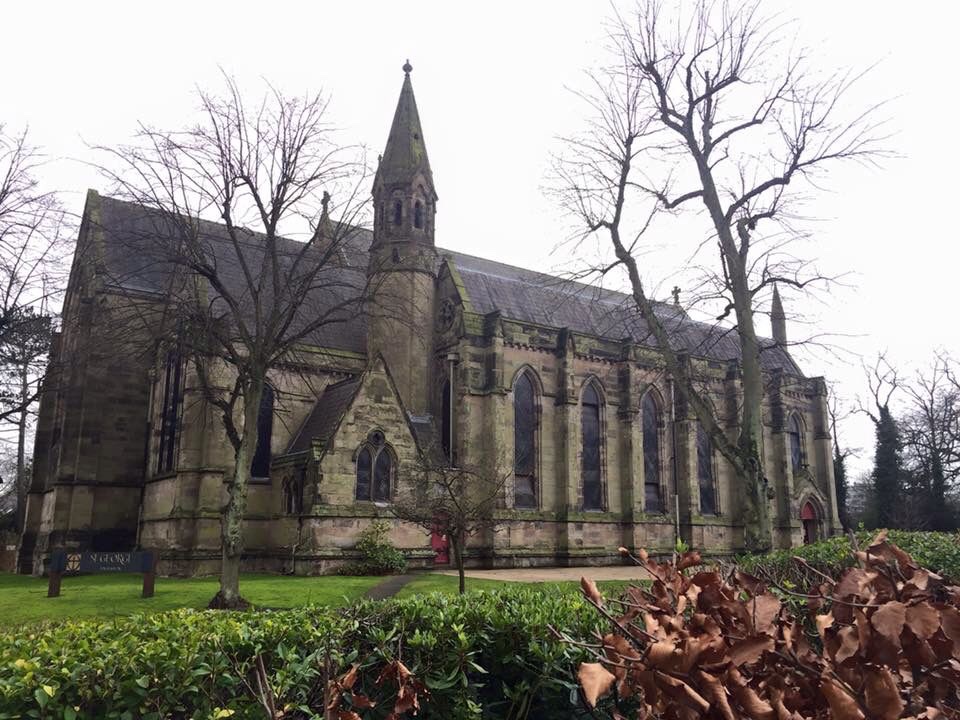
Soon, we reached the entrance to The Botanical Gardens.
Birmingham Botanical Gardens, was founded in 1829 with an initial subscription capital of £2,000. The site selected was ‘Holly Bank Farm’, farmed purely for recreation by a successful fire insurance broker on 18 acres of leased land on Lord Calthorpe’s Estate. The Gardens were designed by J.C. Loudon, a Scotsman who was a leading garden planner, horticultural journalist and publisher.

Apart from the glasshouses, the general layout is much the same today as Loudon’s 1830 plan.
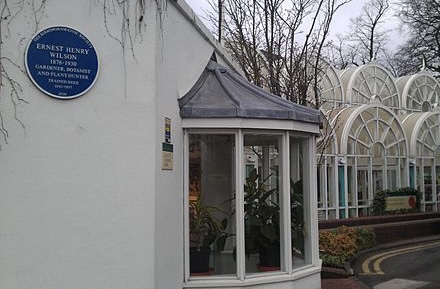
In an effort to increase the membership of the Society, a zoological collection was started in 1910, well before any such enterprise elsewhere in the region. The list of animals to be seen in succeeding years included monkeys, seals, alligators, pythons and wallabies, but the best remembered are the three bears, one of which,Gladly – the cross-eyed bear, is a well-known mondegreen of a hymn. The most recent addition of zoological interest is an Aviary constructed in 1995, housing a varied collection of birds in four separate flights.
PS The hymn was called ‘Gladly the cross I’d bear’, and a ‘mondegreen’ is the term used for the re-phrasing of a well-known phrase, which then sounds the same as the original. As a pupil at nearby St Philip’s Grammar School, sixth formers were afforded the privilege of free admission at lunchtime. What motivated my mates was the opportunity to have a smoke, or teach the parrots to swear!
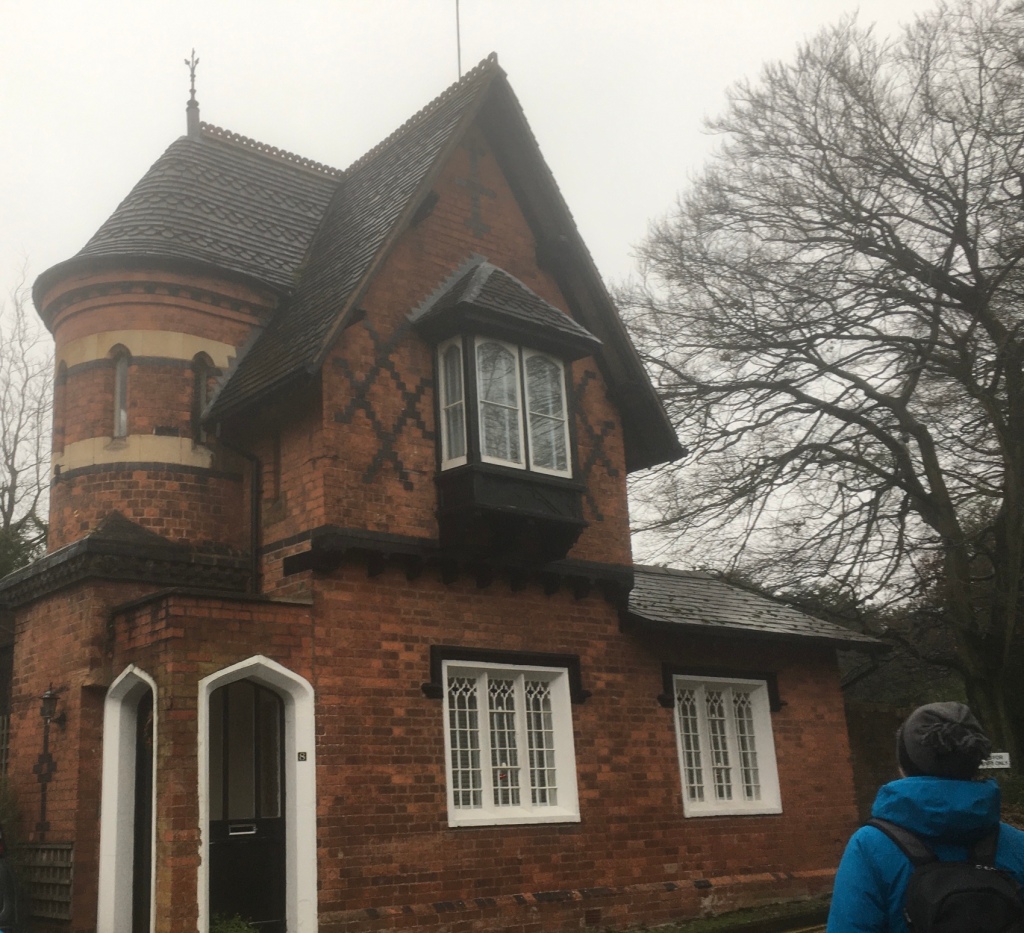
After a mile or so, we walked up Yateley road and in to Westfield road -reputed to be the most expensive housing in Birmingham.
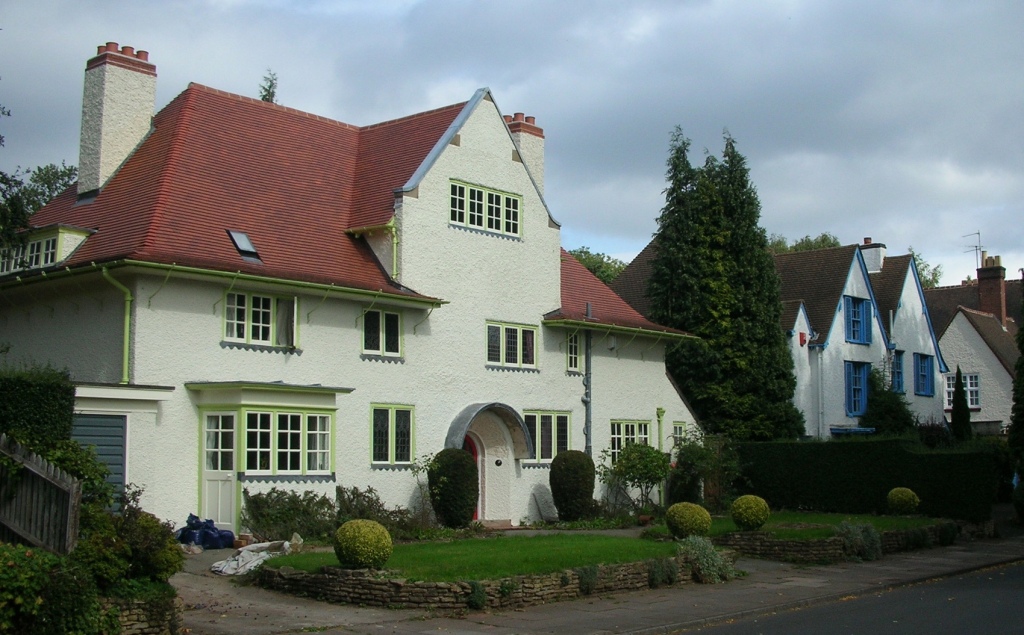
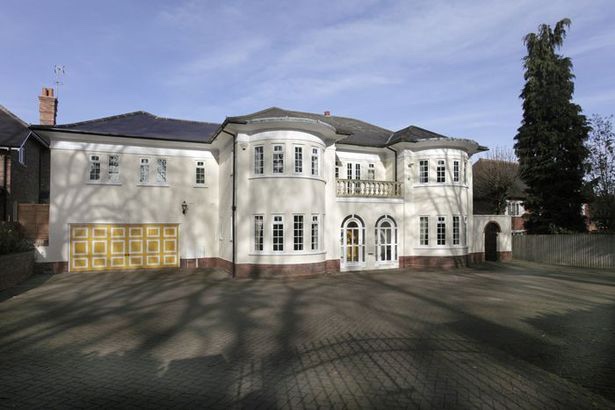
We soon reached the Harborne Walkway.
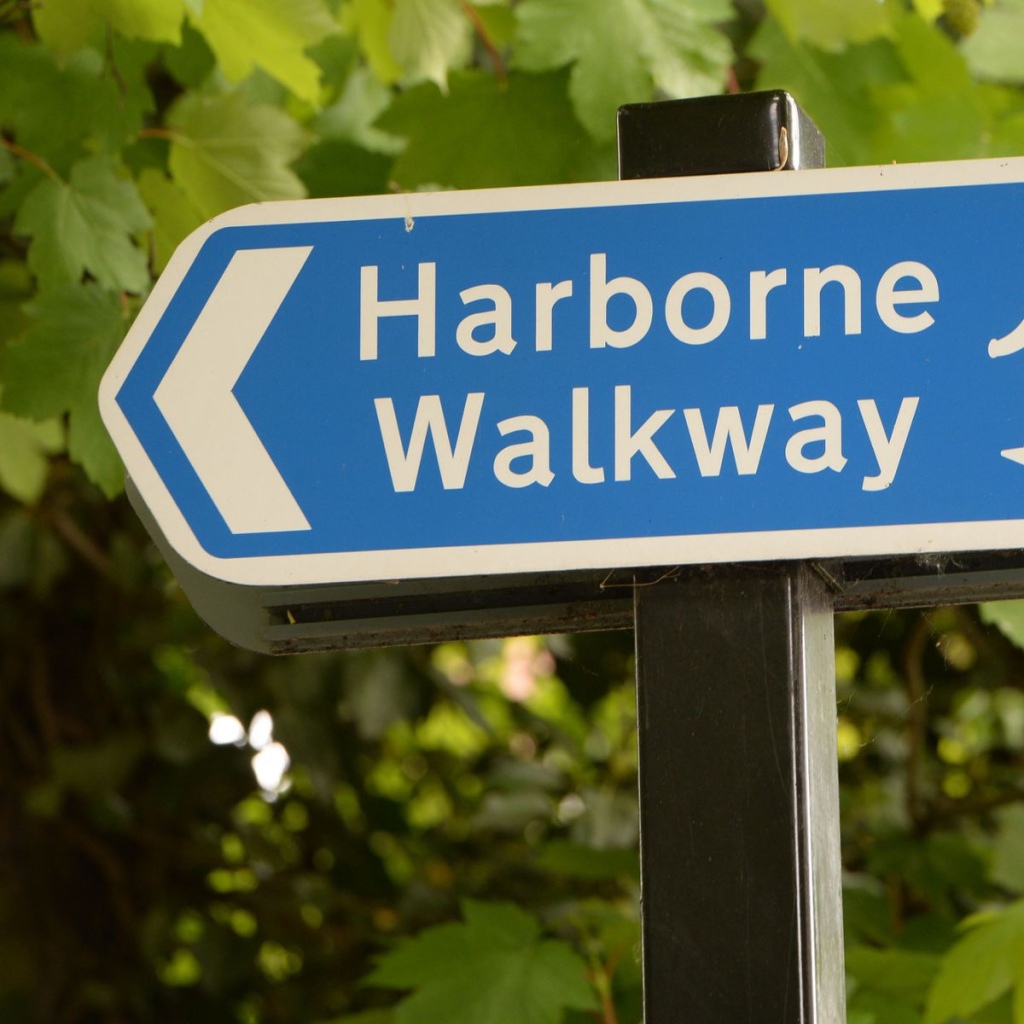
HARBORNE WALKWAY
1.5 miles long on a long abandoned railway which connected the city to Harborne. There were seven stops and the journey took 25 minutes. However, there were frequent delays – it was nicknamed the “ HARBORNE EXPRESS” – and the service which began in 1874 lasted 60 years before it was taken out of service,suffering from the competition of local buses.
Maintained now by city council and volunteers.

Leaving the walk way, we reached the Moor Pool Estate.
The Moor Pool estate was established in 1907 by John Sutton Nettlefold,who was part of the Guest Keen Nettlefold (GKN) family. It formed part of the Garden City concept, shared by George Cadbury in Bournville, to create low density housing with many interspersed green spaces, and community facilities. The estate was built with a community hall (complete with skittle alley and snooker tables), two tennis clubs, a bowling green, numerous allotments, and the Moor Pool (pond) itself; all of these facilities remain today for residents’ use.
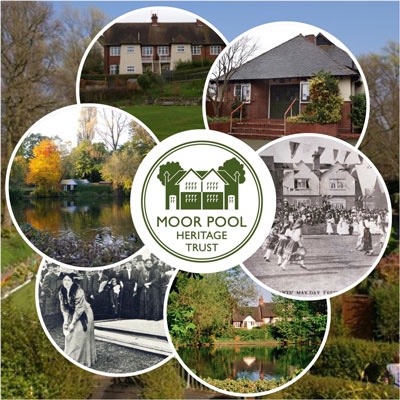
The homes and buildings were designed by William Martin, an architect known for working with John Henry Chamberlain to build 41 of the Birmingham board schools (including the nearby Harborne Clock Tower / School Yard),through their practice Martin & Chamberlain.
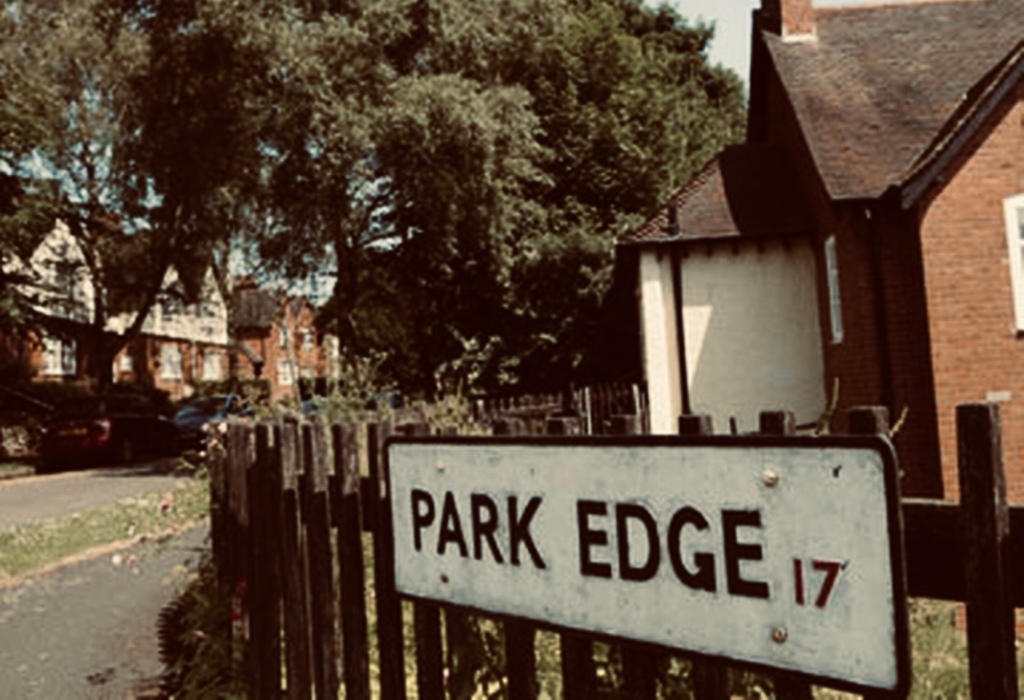
In 2014 the residential landlord of the estate, Grainger plc planned to sell off the local amenities, including the hall, the bowling green, tennis courts, skittle alley, fishing pond, some open space and shops. The Moor Pool Heritage Trust made a deal with Grainger to acquire the community facilities for £325,000. After a fundraiser, which included a £98,900 Heritage Lottery Fund grant, the acquisition was completed on 14 December 2014.

We were very soon in Harborne Village and took coffee at the local swimming baths and gym,beneath a Blue Plaque, commemorating W.H AUDEN
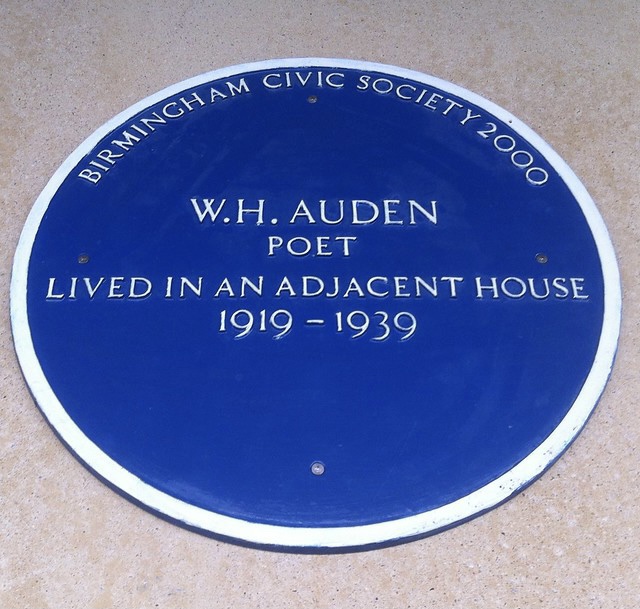
Most commonly known as W H Auden (his full name was Wystan Hugh Auden), he was a renowned Anglo-American poet who lived in Lordswood Road in Harborne, on and off for two decades. And there are still reminders of his former life in the city.
As well as a conference and meeting room named after him at the University of Birmingham, a plaque was erected in 2000 by Birmingham Civic Society here at Harborne swimming baths, near the site of what was his childhood home.
This is one of his most famous poems and you may recall it being featured the film,FOUR WEDDINGS AND A FUNERAL.
STOP ALL THE CLOCKS
Stop all the clocks, cut off the telephone,
Prevent the dog from barking with a juicy bone,
Silence the pianos and with muffled drum
Bring out the coffin, let the mourners come.
Let aeroplanes circle moaning overhead
Scribbling on the sky the message ‘He is Dead’.
Put crepe bows round the white necks of the public doves,
Let the traffic policemen wear black cotton gloves.
He was my North, my South, my East and West,
My working week and my Sunday rest,
My noon, my midnight, my talk, my song;
I thought that love would last forever: I was wrong.
The stars are not wanted now; put out every one,
Pack up the moon and dismantle the sun,
Pour away the ocean and sweep up the wood;
For nothing now can ever come to any good.
Leaving our literary coffee stop,we made our way to St Peter’s Church next to the Bell Inn.
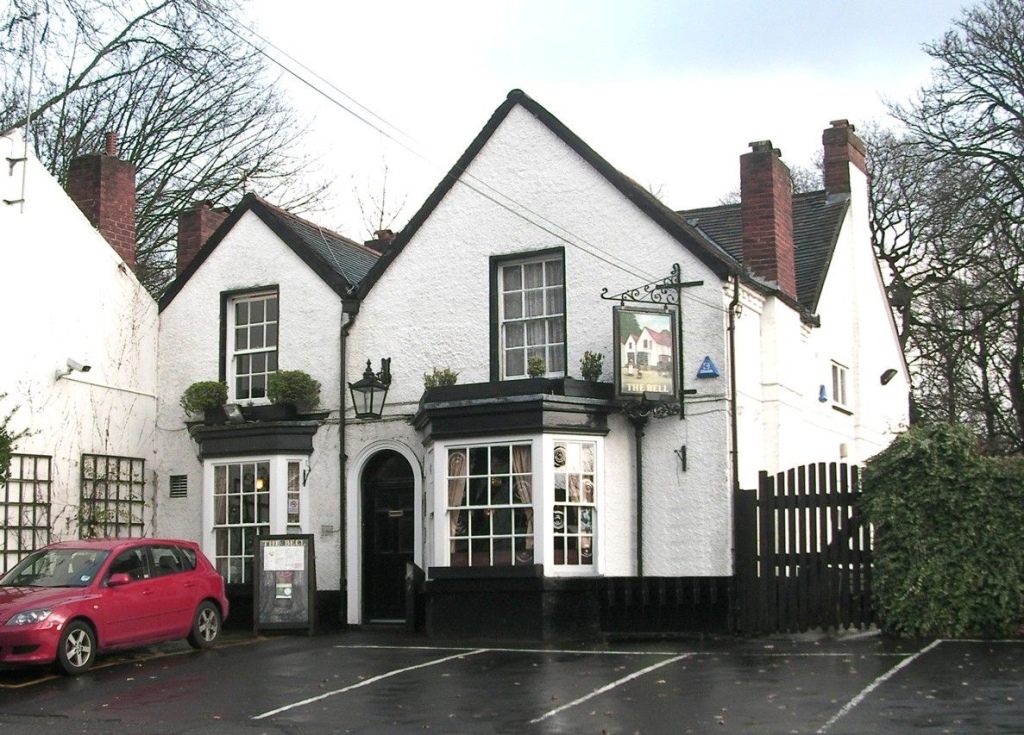
Adjacent is St Peter’s Church with an even older ancestry.

There has been a church on this site, since Saxon times and St Chad is thought to have preached here. The base of a preaching cross was found in the middle 1980s during work at the back of the church and is now in the Church Hall garden.
The present building, Grade 2 listed, is Victorian, the sanctuary was rebuilt during l974/5 after a fire, and the tower is the oldest part and a well known landmark for miles around. It dates from the 14th century. It was noticeable as you stand in the forecourt which was the site of the old Victorian Vicarage, that the west door, ringing chamber and clock, are not in line. It is thought that the tower was built over a period of 200 years and when the Black Death of 1348 killed many of the craftsmen of Harborne, the tower was finished by unskilled workmen.
After crossing through Harborne Cricket Club’s grounds, we walked by St Mary’s RC Church, with a rather incongruous parish hall steeple.

Walking on via Harborne High St, we walked along Metchley Lane to Somerset road, where we eventually reached the Birmingham Worcester Canal. We then took the towpath back to our starting point at Five Ways – some ramblers carried on along to town – despite the wet weather, we had a good walk.


Ps Covid regulations, we are designated TIER 3, means we may only walk within Birmingham Local Authority Area . In the new year, we intend to explore the city further.

Leave a comment